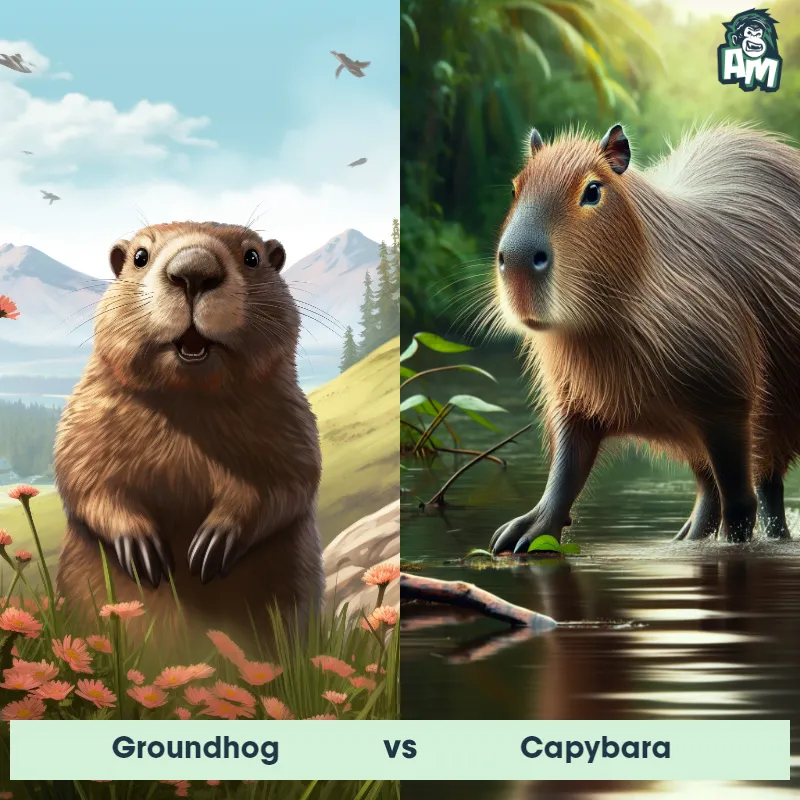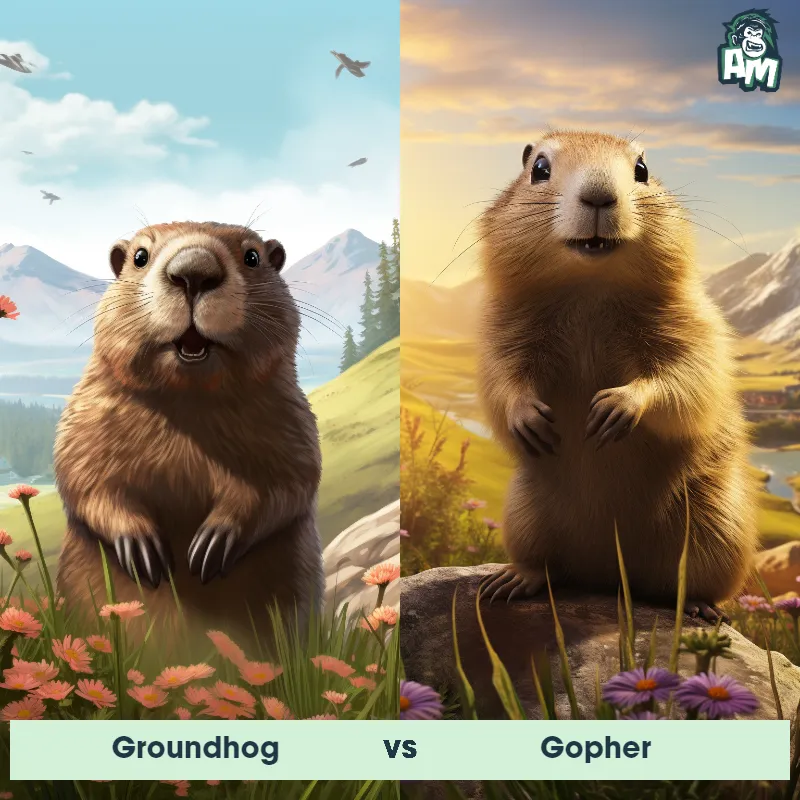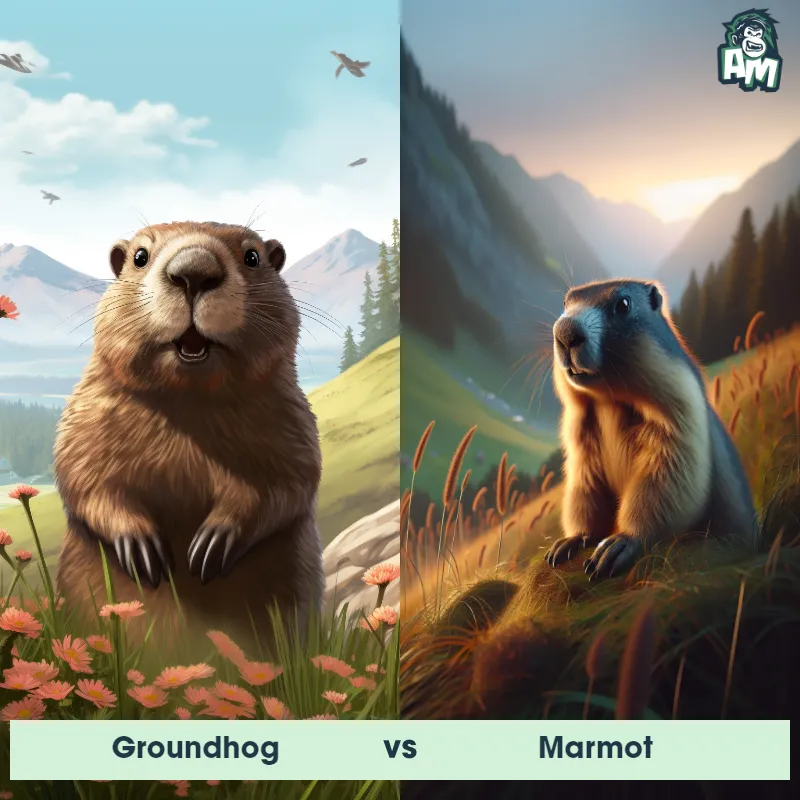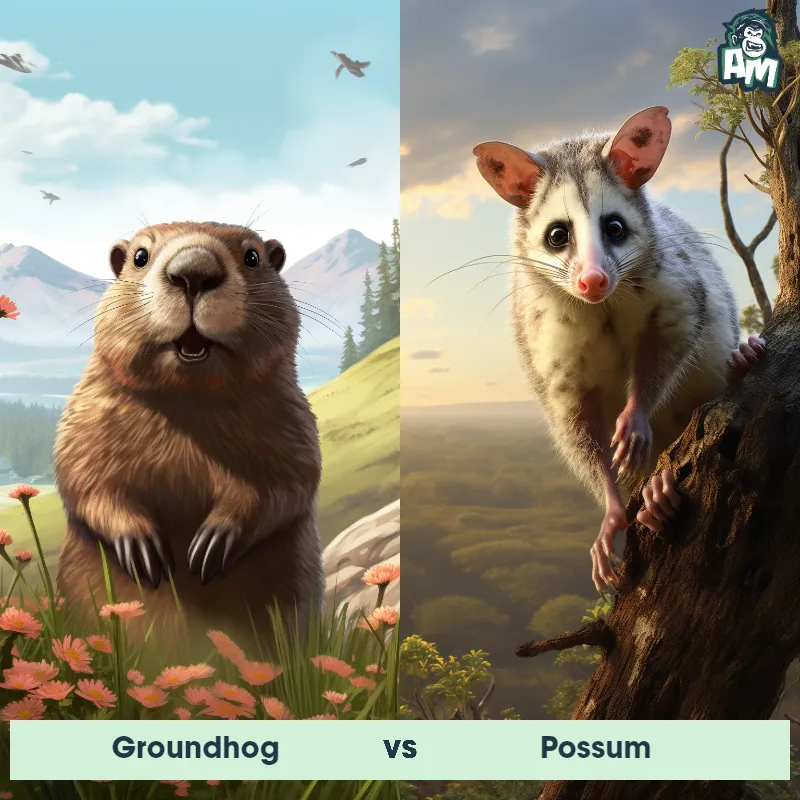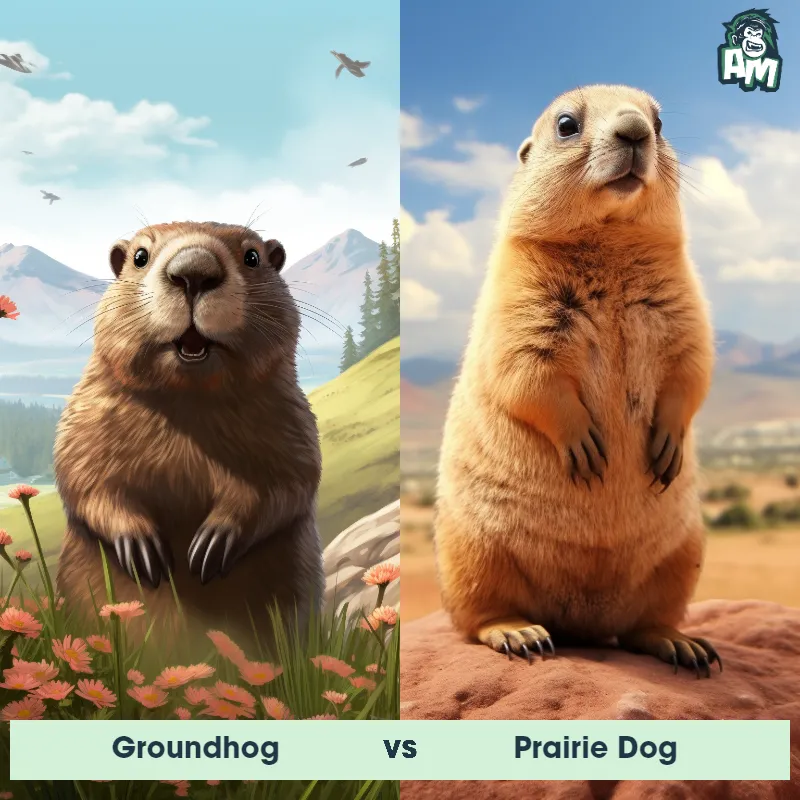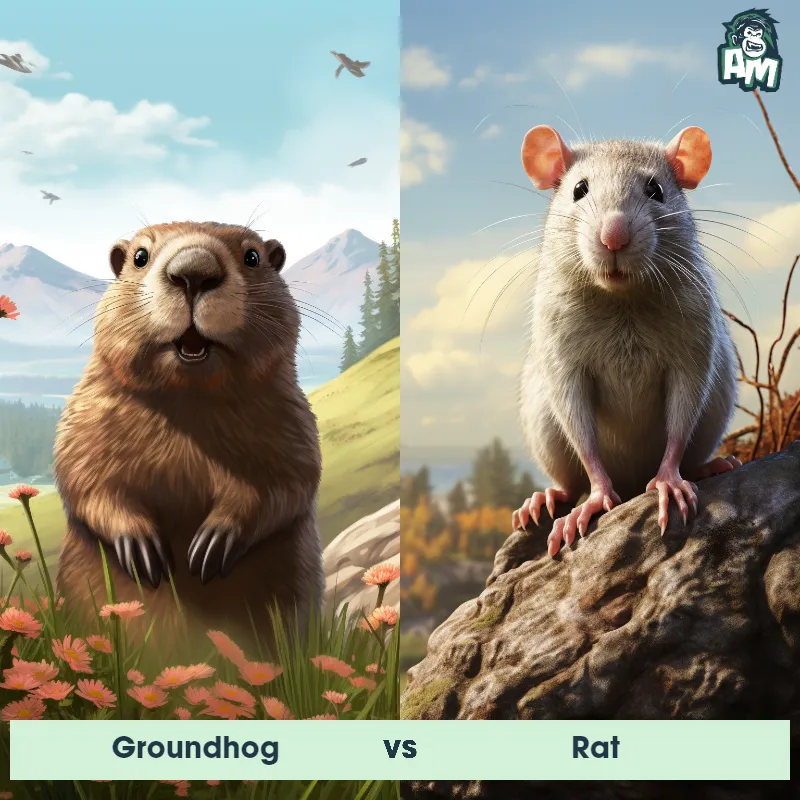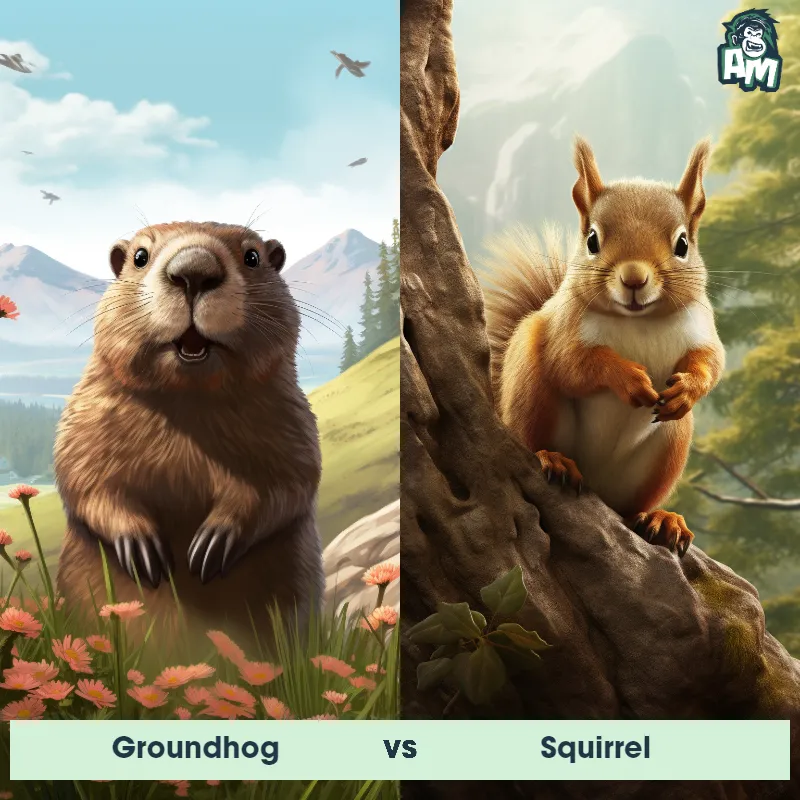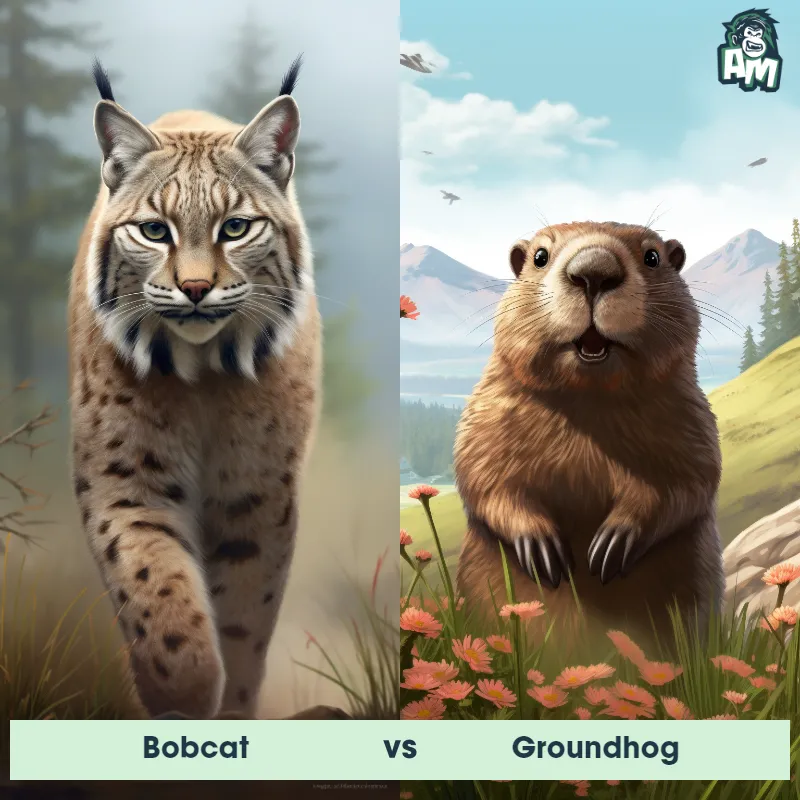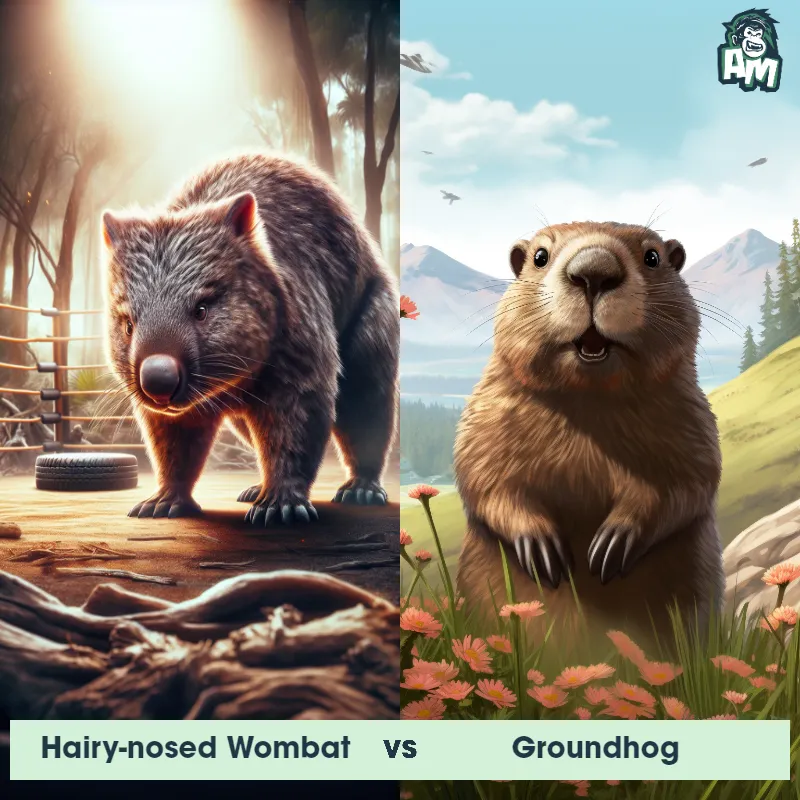The Groundhog
The Groundhog, also known as the woodchuck, is a medium-sized rodent native to North America. It is known for its stocky build, short legs, and short bushy tail. Groundhogs have dense fur that varies in color from brown to gray, helping them blend in with their surroundings. These creatures are excellent diggers, constructing elaborate burrows that can extend up to six feet underground. Groundhogs are herbivores, mainly feeding on grasses, plants, and crops. They are known for their hibernation behavior, retreating to their burrows during the winter months and emerging in early spring.
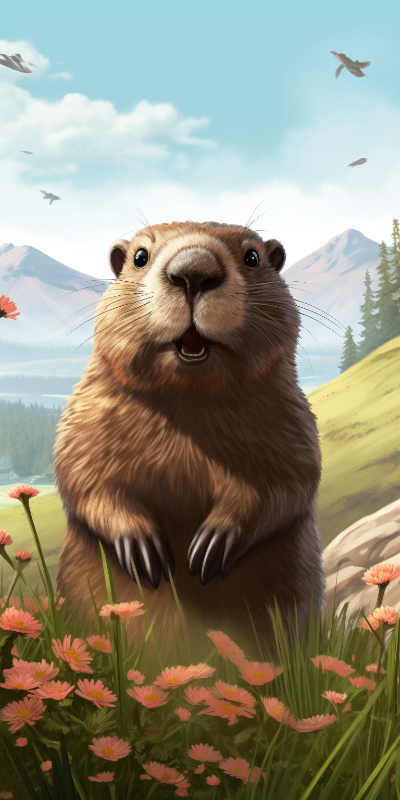
| Groundhog | |
|---|---|
| Size | Up to 26 inches long (66 cm) |
| Weight | Up to 14 pounds (6.35 kg) |
| Speed | 12 mph (19 km/h) |
| Key Strength | Sharp claws for digging and defense |
| Biggest Weakness | Stout body, not built for speed |
| Scientific Name | Marmota monax |
| Family | Sciuridae |
| Habitat | Meadows, pastures, and edges of woodlands |
| Geography | North America |
| Diet | Grasses, fruits, and vegetables |
| Lifespan | 3 years - 6 years |

The Groundhog
The Groundhog, also known as the woodchuck, is a medium-sized rodent native to North America. It is known for its stocky build, short legs, and short bushy tail. Groundhogs have dense fur that varies in color from brown to gray, helping them blend in with their surroundings. These creatures are excellent diggers, constructing elaborate burrows that can extend up to six feet underground. Groundhogs are herbivores, mainly feeding on grasses, plants, and crops. They are known for their hibernation behavior, retreating to their burrows during the winter months and emerging in early spring.
Fun Fact: One fun fact about Groundhogs is that they are excellent climbers, despite their stout physique, and can ascend trees and shrubs, using their sharp claws and strong limbs to maneuver their way up.
| Groundhog | |
|---|---|
| Size | Up to 26 inches long (66 cm) |
| Weight | Up to 14 pounds (6.35 kg) |
| Speed | 12 mph (19 km/h) |
| Key Strength | Sharp claws for digging and defense |
| Biggest Weakness | Stout body, not built for speed |
| Scientific Name | Marmota monax |
| Family | Sciuridae |
| Habitat | Meadows, pastures, and edges of woodlands |
| Geography | North America |
| Diet | Grasses, fruits, and vegetables |
| Lifespan | 3 years - 6 years |
Groundhog Matchups
We use AI to simulate matchups between the Groundhog and other animals. Our simulation considers size, strength, and natural predatory behaviors to determine the most likely outcome.

Can't find the Matchup you want?
Create Your Own MatchupGroundhog: Diet, Predators, Aggression, and Defensive Behaviors
What do Groundhogs eat?
Groundhogs are mainly herbivores and their diet consists of grasses, fruits, vegetables, and other plant materials. They particularly enjoy eating clover, alfalfa, and dandelion leaves. In some instances, they may also feed on insects and larvae, but their diet primarily consists of plant-based foods.
Do Groundhogs have any predators?
Groundhogs do have several predators in the wild, including foxes, coyotes, wolves, bobcats, and birds of prey such as owls and hawks. Additionally, domestic pets like dogs and cats may also pose a threat to Groundhogs. These predators primarily target young, vulnerable Groundhogs, as adult Groundhogs are capable of defending themselves against some of their natural predators.
Are Groundhogs aggressive?
Groundhogs are generally known to be shy and solitary animals, and they tend to avoid confrontation with humans or other animals. However, when they feel threatened or cornered, they may become aggressive and use their sharp teeth and claws to defend themselves. Typically, Groundhogs are not aggressive unless provoked.
Do Groundhogs fight?
While Groundhogs are not inherently aggressive animals, they are known to engage in fights with each other during mating season or when defending their territory. These fights are often resolved through vocalization, posturing, and physical combat, with the dominant Groundhog asserting its dominance over the other.
How do Groundhogs defend themselves?
Groundhogs have several defense mechanisms to protect themselves from predators or threats. When confronted, they may emit loud shrill noises, gnash their teeth, and use their claws to defend themselves. Additionally, Groundhogs are excellent burrowers and can quickly retreat into their underground burrows for safety.
What is Groundhogs' biggest weakness in a fight?
One weakness of Groundhogs in a fight is their relatively slower speed compared to some of their predators. While they are agile and can defend themselves effectively with their teeth and claws, they may struggle to outrun or outmaneuver faster predators. As a result, Groundhogs rely on their burrowing abilities and defensive tactics to protect themselves in potentially dangerous situations.
Fun Fact: Groundhogs possess a remarkable ability to predict the weather, as according to folklore, if a Groundhog emerges from its burrow and sees its shadow on the 2nd of February Groundhog Day, it indicates six more weeks of winter, and if it does not see its shadow, it signifies an early spring.
Fun Fact: Groundhogs are considered one of the few true hibernators among mammals, as their body temperature dramatically drops, and their heartbeat and breathing slow down during the winter months, enabling them to conserve energy and survive in the harsh conditions while hibernating in their burrows.



